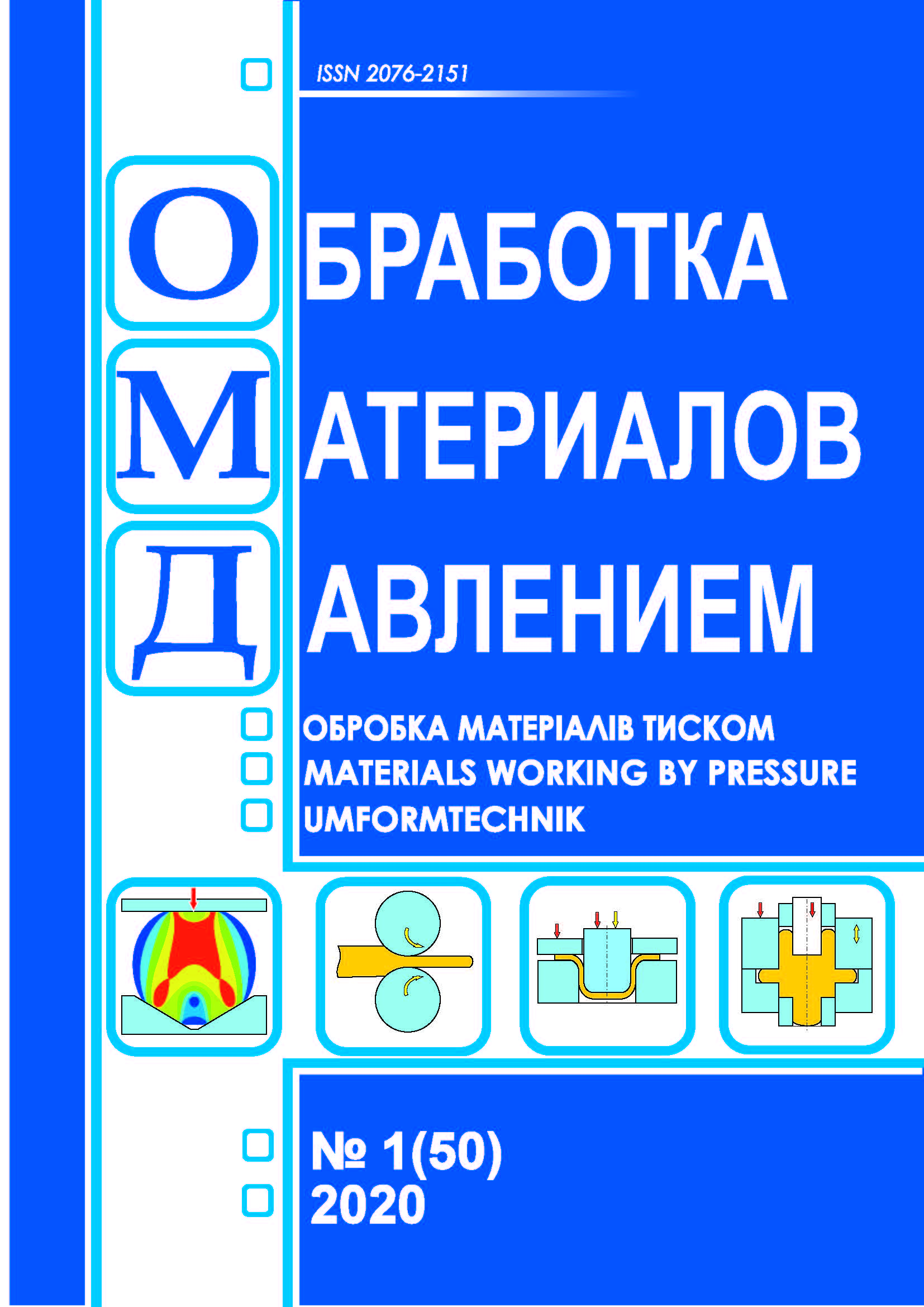Development of cold drawing modes for wire overheated during heat treatment
DOI:
https://doi.org/10.37142/2076-2151/2020-1(50)217Keywords:
wire, overheating, drawing, drawing, annealing, properties, sharpening of wire ends.Abstract
Anischenko O. S., Kukhar V. V., Prysiazhnyi A. H. Development of cold drawing modes for wire overheated during heat treatment. Material working by pressure. 2020. № 1 (50). P. 217-223.
The purpose of the work is to develop modes of cold drawing of overheated wire, which ensure the integrity of the metal during deformation and at the same time increase its strength. A wire made of steel St.2 (0.12 - 0.13 % C) with an initial diameter of 4 mm was investigated. The wire was wound into coils weighing 1 ton each, which had an overheating defect due to holding for 3 hours at 1140–1160 °C. Metallographic studies have shown that in the longitudinal and transverse sections of the wire grains formed after overheating at 1140 - 1160 °C, small and equilibrium. Their diameter ranges from 6 to 24 μm in the transverse and from 5 to 70 μm in the longitudinal section of the wire. According to the scale of GOST 5639-82, the grain size is 8-10, which indicates overheating of the investigated metal. The thermomechanical processing of the wire was carried out according to modes in which a combination of cold drawing, annealing, and overheating was used. As a result, the technology of cold drawing of overheated wire without re-annealing was developed, which provided, when drawing in one pass 1.20–1.52 and drawing speeds from 0.245 to 0.518 m / s, an increase in strength to a level sufficient for using the wire as a binding material and blanks for nails. On the basis of the experimental data, analytical dependences of the ultimate resistance and the yield point of an overheated wire on its drawing during drawing have been obtained. An inequality is proposed that connects the stress arising at the initial moment of drawing in the section of the final sharpened section of the wire and the shear stress of burrs formed during sharpening with the ultimate resistance of steel St.2. The inequality allows the ultimate stretch to be calculated for each drawing pass.

